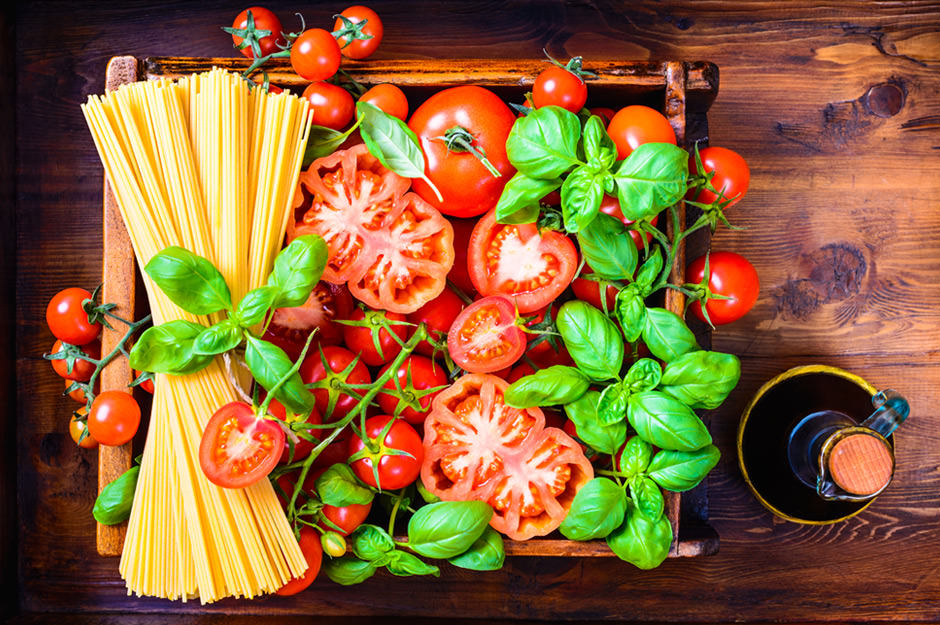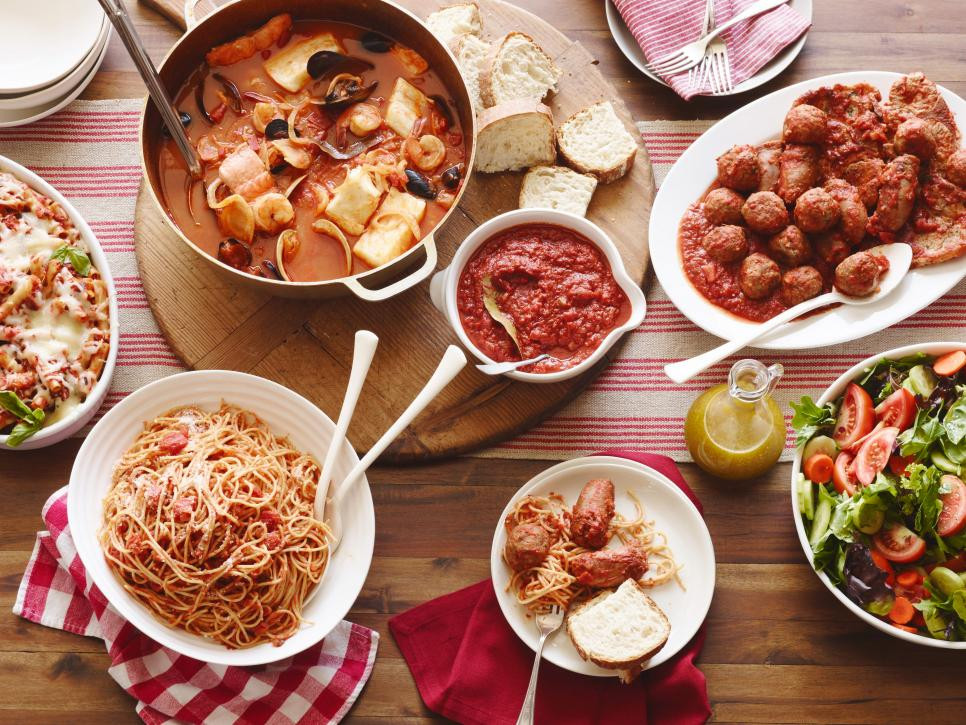Prepare your taste buds for a culinary adventure as we delve into the vibrant and diverse italy food culture, where every region tells a unique story through its distinctive dishes. From the sun-kissed shores of the Mediterranean to the rolling hills of Tuscany, Italian cuisine captivates the senses with its symphony of flavors, fresh ingredients, and centuries-old traditions.
Our exploration begins with a deep dive into the regional specialties that define Italy’s gastronomic landscape. Geography and history have played a pivotal role in shaping these culinary variations, resulting in a rich tapestry of flavors and textures that will tantalize your palate.
Regional Cuisine

Italy is a land of diverse culinary traditions, with each region boasting its unique flavors and specialties. This culinary diversity is a reflection of Italy’s varied geography and rich history.
Northern Italy, with its proximity to the Alps and the influence of neighboring countries, features dishes like hearty risottos, creamy polenta, and flavorful cheeses. Central Italy, the birthplace of the Renaissance, is known for its rich sauces, succulent meats, and delectable pasta dishes.
Southern Italy, influenced by the Mediterranean Sea and Greek and Arab cultures, showcases a cuisine that emphasizes fresh seafood, vibrant vegetables, and spicy flavors. The islands of Sicily and Sardinia have their own distinct culinary identities, with dishes that blend influences from both Italy and neighboring regions.
Regional Specialties
| Region | Dish | Ingredients | Characteristics |
|---|---|---|---|
| Northern Italy | Risotto alla Milanese | Rice, saffron, butter, onions, white wine | Creamy, golden-yellow rice dish |
| Central Italy | Cacio e Pepe | Pasta, Pecorino Romano cheese, black pepper | Simple but flavorful pasta dish with a rich, cheesy sauce |
| Southern Italy | Pizza Margherita | Pizza dough, tomato sauce, mozzarella cheese, basil | Classic Neapolitan pizza with a thin, crispy crust and fresh toppings |
| Sicily | Arancini | Rice balls filled with meat, cheese, or vegetables | Fried rice balls with a crispy exterior and savory filling |
Staple Ingredients
Italian cuisine is renowned for its simplicity and freshness, relying on a few essential ingredients that form the backbone of many dishes.
The cornerstone of Italian cooking is fresh produce, which includes an abundance of vegetables, fruits, and herbs. Tomatoes, garlic, onions, and basil are ubiquitous, adding vibrant flavors and aromas to countless dishes. Olive oil, a key ingredient in Italian cooking, is used liberally for sautéing, drizzling over salads, and adding a touch of richness to sauces and marinades.
Fresh Produce, Italy food culture
- Tomatoes: A versatile ingredient used in sauces, salads, soups, and stews.
- Garlic: A pungent bulb that adds depth of flavor to many dishes.
- Onions: A staple in Italian cooking, providing a sweet and savory base for sauces and soups.
- Basil: A fragrant herb that is essential for making pesto and adds freshness to salads and pasta dishes.
Olive Oil
Olive oil is the lifeblood of Italian cooking, used for its rich flavor and health benefits. Extra virgin olive oil, the highest quality grade, is preferred for its fruity aroma and delicate taste. Olive oil is used for sautéing, roasting, and drizzling over salads, adding a touch of richness to every dish.
Herbs
Herbs play a vital role in Italian cuisine, adding freshness, aroma, and flavor to dishes. Basil, oregano, rosemary, and thyme are some of the most commonly used herbs, adding depth and complexity to sauces, marinades, and salads.
Cooking Methods

Italian cuisine is known for its emphasis on fresh, high-quality ingredients and traditional cooking techniques. These methods have been passed down through generations, resulting in a rich and diverse culinary landscape.Traditional Italian cooking methods include:
- Grilling: Grilling is a popular method used to cook meats, vegetables, and fish. It imparts a smoky flavor and creates a crispy exterior.
- Roasting: Roasting is another common technique, particularly for meats and vegetables. It involves cooking the food in an oven at high temperatures, resulting in a tender interior and a browned exterior.
- Braising: Braising is a slow-cooking method that combines browning the food in a pot and then simmering it in a flavorful liquid. This technique is often used for meats and produces tender and juicy results.
- Stewing: Stewing is similar to braising but involves cooking the food in a larger amount of liquid. It is a good method for cooking tough cuts of meat and vegetables.
- Frying: Frying is a popular method for cooking a variety of foods, including meats, vegetables, and seafood. It involves submerging the food in hot oil, resulting in a crispy exterior and a tender interior.
These cooking methods are used to create a wide range of classic Italian dishes, such as grilled bistecca alla Fiorentina, roasted pollo al forno, braised osso buco, stewed stracotto, and fried calamari fritti.
Cultural Significance

Food holds an immense cultural and social significance in Italian society, deeply intertwined with family traditions, social gatherings, and the rhythms of daily life. It serves as a centerpiece of cultural identity, fostering a shared sense of community and a profound appreciation for culinary excellence.
Within Italian households, food is not merely sustenance; it is a ritual, a symbol of love, and a means of passing down cherished family recipes. Mealtimes are sacred occasions, where families gather around the table to share not only food but also stories, laughter, and a sense of belonging.
Role in Holidays and Festivals
Food plays an integral role in Italian holidays and festivals. During Christmas, for instance, families indulge in elaborate feasts featuring traditional dishes such as panettone, tortellini, and cotechino. Easter is marked by the preparation of lamb dishes and the iconic “colomba” cake.
These culinary traditions are deeply ingrained in Italian culture, providing a tangible connection to the past and a sense of continuity.
“Food is the expression of a culture, a tradition, and a way of life. It is the memory of our ancestors and the future of our children.”- Massimo Bottura, Italian chef
International Influence: Italy Food Culture
Italian cuisine has had a profound impact on culinary traditions worldwide. Its popularity stems from its versatility, flavorful ingredients, and emphasis on fresh produce. Italian dishes have become staples in international restaurants and home cooking, inspiring countless variations and interpretations.
Global Favorites
Some of the most beloved Italian dishes that have gained global recognition include:
- Pizza:A thin, crispy dough topped with various sauces, cheeses, and toppings, pizza has become a ubiquitous fast food option.
- Pasta:A wide variety of pasta shapes and sauces, from classic spaghetti and meatballs to creamy carbonara, have captured the hearts of diners worldwide.
- Risotto:A creamy rice dish cooked in broth and often enhanced with seafood, vegetables, or cheese.
- Gelato:A smooth, dense frozen dessert that has become a favorite summer treat.
- Tiramisu:A layered dessert made with coffee-soaked ladyfingers, mascarpone cheese, and cocoa powder.
Query Resolution
What is the most popular dish in Italian cuisine?
Pizza is arguably the most iconic and beloved dish in Italian cuisine, enjoyed worldwide for its versatility and deliciousness.
What are some of the key ingredients in Italian cooking?
Fresh produce, olive oil, herbs, tomatoes, garlic, onions, and cheese are essential ingredients that form the foundation of many classic Italian dishes.
What is the significance of food in Italian culture?
Food plays a central role in Italian society, serving as a symbol of family, community, and the celebration of life. It is deeply intertwined with social gatherings, holidays, and everyday rituals.
